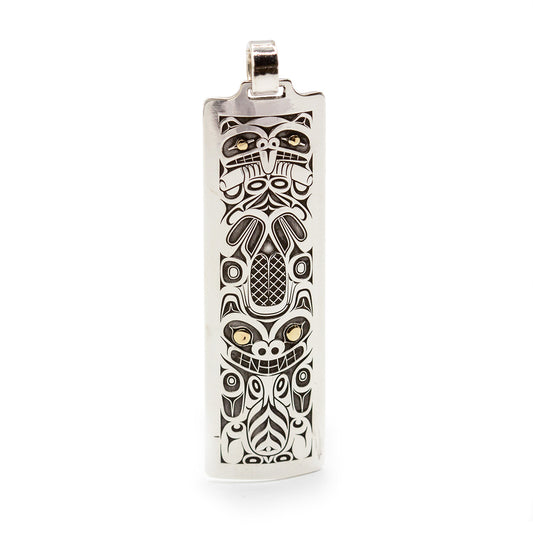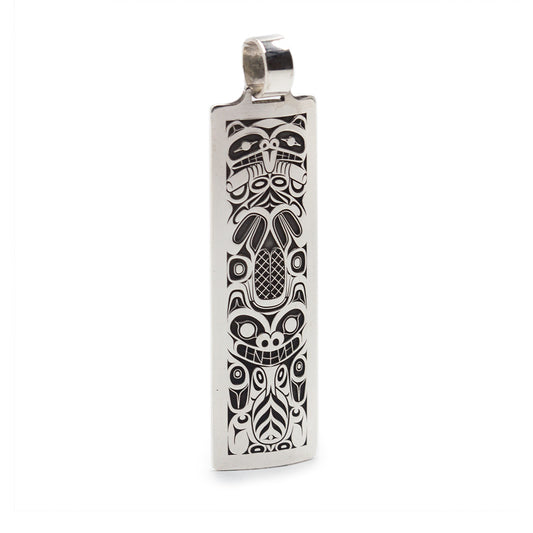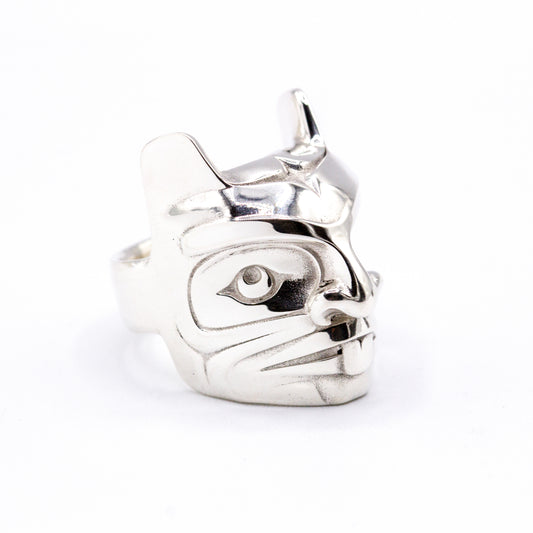Collection: The Beaver Symbol
Well known for its industriousness and building skills, Beaver keeps to themselves and presents only when deemed absolutely necessary. They care little for the activities of humans, except when they feel that their work is discredited or their skill insulted (Shearar). The busy creatures are also known to give wise advice. It is best advised to listen closely when the reserved Beaver does decide to speak.
Indigenous Significance of the Beaver Symbol
These popular inhabitants of the Northwest Coast were once widely hunted for their pelt. During the fur trade days, demand for beaver pelts grew rapidly and a Beaver crest affiliation sometimes granted individuals the right to trade in pelts (Shearar).
According to one story, the first Beaver was transformed from a woman. Her husband was driven, by the disapproval of his wife’s family, to prove himself a great provider. His hunting trips were frequent and long. His lonely wife took solace in swimming, enlarging a pond with a dam and building her own water-dwelling, and eventually turning into a Beaver. Their children were known as Beaver People, like their transformed mother, and were the founders of human Beaver lineage (Shearar).
Artistic Characteristics of the Beaver
In artwork, Beaver is characterized by a bear-like head, a short, wide, rounded snout; short ears; prominent incisor teeth (Dawkins). Of course, Beaver can also be identified by their recognizable wide, flat, crosshatched or scaled tail, which generally is flipped up in front of the body. A magic giant Beaver is even said to create impacts as large as natural disasters with one slap of its strong tail (Shearar).






